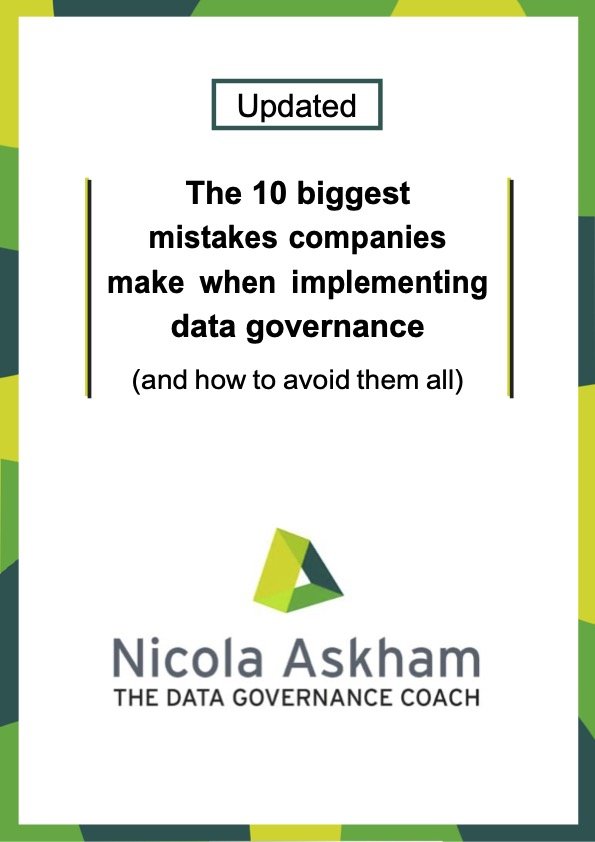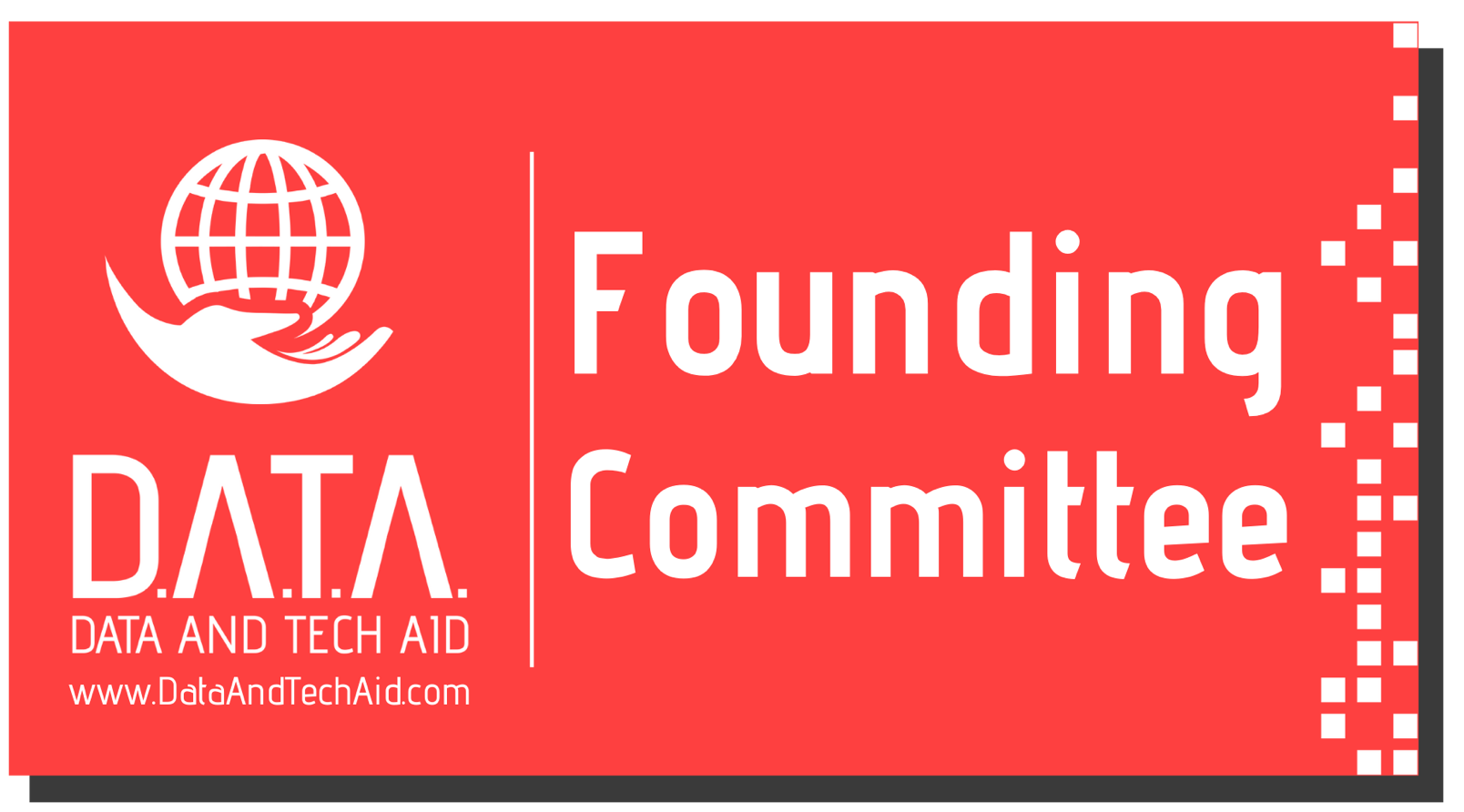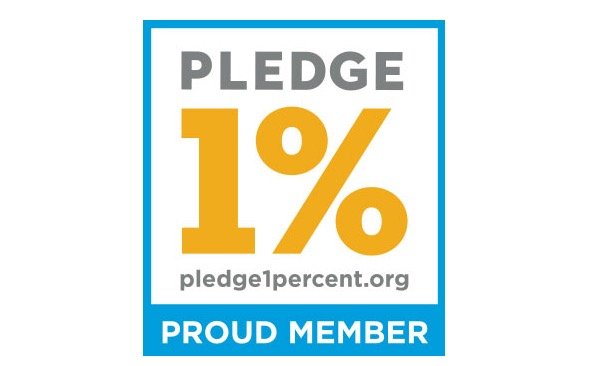Data Governance Committees, Forums and Working Groups
/At some point in your Data Governance initiative you are going to need to think about setting up a Data Governance Committee. So in this blog I wanted to look at what a Data Governance Committee is and what it should do.
Before I start to look at this in detail I want to remind you that you may not call yours a Committee and that is f fine. As I mentioned in this blog the titles of roles can be emotive and we need to be pragmatic about their use. The same is true for your Data Governance Committee. You may have a Data Governance Forum, Data Steering Group, or something similar. Whatever you call it is not important, it’s who sits on it and what it does that is important.
What is Data Governance Committee?
A Data Governance Committee is simply the forum where you get all of your Data Owners together. Now of course, that is an oversimplification; but it’s a good starting place. I’ve worked with some excellent Data Owners over the years, but it would be naïve to think that they could’ve run the Committee on their own. They are going to need some expert advice and guidance to help them make the right decisions about your company’s data.
These “experts” will include the following types of roles: your Enterprise Data Architect, the Head of Internal Compliance, and the Head of Operational Risk. In more than one client, the CIO has been an attendee. Deciding who you will invite as your experts will, of course, depend on the remit of your Data Governance Committee, which we will look at a little bit later. Before I move off the topic of expert advisors, I want to consider culturally how you will sell the concept of attending these meetings to the experts.
After all, by the time you set up your Data Governance Committee, you should have spent a considerable amount of time and effort identifying and engaging your Data Owners. You have succeeded in getting the agreement of senior roles within your organisation to be accountable for the data quality of a number of data sets. Then you tell them that they can’t make decisions upon their data alone…
Depending on the culture of your company, this may not go down too well! In many organisations, this isn’t really an issue. However, with some of my past clients, to avoid any unnecessary tensions, the terms of the committee have made it clear that the Data Owners are the “members” of the committee, and are the only people who can make decisions. The “experts” are “attendees”; there to provide advice and guidance to help the Data Owners make their decisions. (Notice that I don’t say “the right decisions,” that phrase could also open up a myriad of tensions and issues!)
There are three more people who are key to the success of your Data Governance Committee:
Firstly, a strong chair person. I have seen it work successfully with this role undertaken by one of the Data Owners, but it is better if the Chair of the Committee is not a Data Owner themselves so that they can remain neutral if any heated debates ensue. Ideally this person will be the executive sponsor of your Data Governance initiative, that way they have a vested interest in making it work and they are in the right position to escalate issues to the Executive Committee if that is needed at any point.
Secondly, you should be there! I am of course assuming that you are the Data Governance Manager or the person leading the Data Governance implementation (whatever your title happens to be); if so, you need to be an attendee. You are key to reconciling the agenda with the Chair Person, and in the early days you will be presenting many proposals for activities you want to start or include in your Data Governance initiative to get approval from the Data Owners.
Finally, you are going to need some type of secretariat support for the Committee. Arranging the meetings, booking meeting rooms, circulating papers in advance, and taking minutes are all crucial to the smooth and successful running of this Committee. If your organisation is very small, then you may have to do this yourself, but you may have a fellow Data Governance Team member that can help you, or perhaps the Chair Person’s personal assistant could provide some support.
So, hopefully that has given you an idea of who to invite, but you can’t invite them without being able to explain to them what it is they will have to do.
What does a Data Governance Committee do?
As with all things Data Governance, what the committee is responsible for will depend very much on your organisation and the Data Governance Framework you have designed or are designing. It will also depend on when you set it up. At the very least, the committee will be responsible for the oversight of the Data Governance Framework and for monitoring material data quality issues. The committee could also be responsible for ensuring compliance with relevant data related regulation as well as steering other data projects such as master data management, or the implementation of a Data Warehouse.
Depending on when the Committee is set up, its role in the development and implementation of your Data Governance Framework may also be dictated. Over the years, I have seen such forums set up at various times: before the Data Governance initiative has really begun; as it starts; and once the Data Governance initiative has started. My preference would be for the latter, but let’s look at each in turn:
Data Governance Committee First
This usually happens when a senior stakeholder recognises the need “to do something” about their data, and invites like-minded peers to a forum to discuss and agree what it is they can do. Sometimes this can be a useful step in identifying the need for and starting a Data Governance Initiative. At other times they can be a talking shop where attendees share their issues and everyone agrees that it is a problem, but not what will be done to resolve them.
If this is what you are facing, view this as your self-identified stakeholders, and work with them to get the initiative started. They will then be instrumental in all stages of designing and implementing your Framework. At some stage, you will have to review the attendees as it will become obvious that not all of them are Data Owners and that some new Data Owners will need to be invited.
Data Governance Committee as Initiative Starts
In my opinion, this is still a little early; things move slowly at the start and it can be challenging to keep all the attendees engaged if you don’t have much progress to report. You also have the issue of how to identify the attendees if you haven’t designed the Framework and identified the Data Owners.
In this situation, the sponsor has identified key stakeholders and invited them. This can lead to engagement issues – if they really aren’t interested – plus, you will have the same need, detailed above, to review and change the membership a few months in.
Data Governance Committee on Data Governance Has Started
My preference is to set up the committee after you have designed an initial high-level Data Governance Framework once you have identified and agreed upon who the Data Owners are, or as a step to agree them. At this stage, you will be starting with a clear purpose and the correct attendees so that they can focus on overseeing the detailed design and implementation of the Data Governance Framework.
Whichever of the above situations you are facing, you must be clear from the start that the terms of reference for this Committee will evolve and transition from oversight of development and implementation, to the ongoing oversight and governance of your Data Governance Framework.
I do hope that this has clarified what a Data Governance Committee is and what it should do. But please don’t rest on your laurels once your committee has been set up. It requires a lot of effort to make and keep such forums successful. You can read my top tips for how to go about that here.
Setting up a Data Governance Committee is just one of many things you need to do when implementing Data Governance. You can find out more of the tasks (and the order in which they need to be done) by downloading my free Data Governance Checklist.








